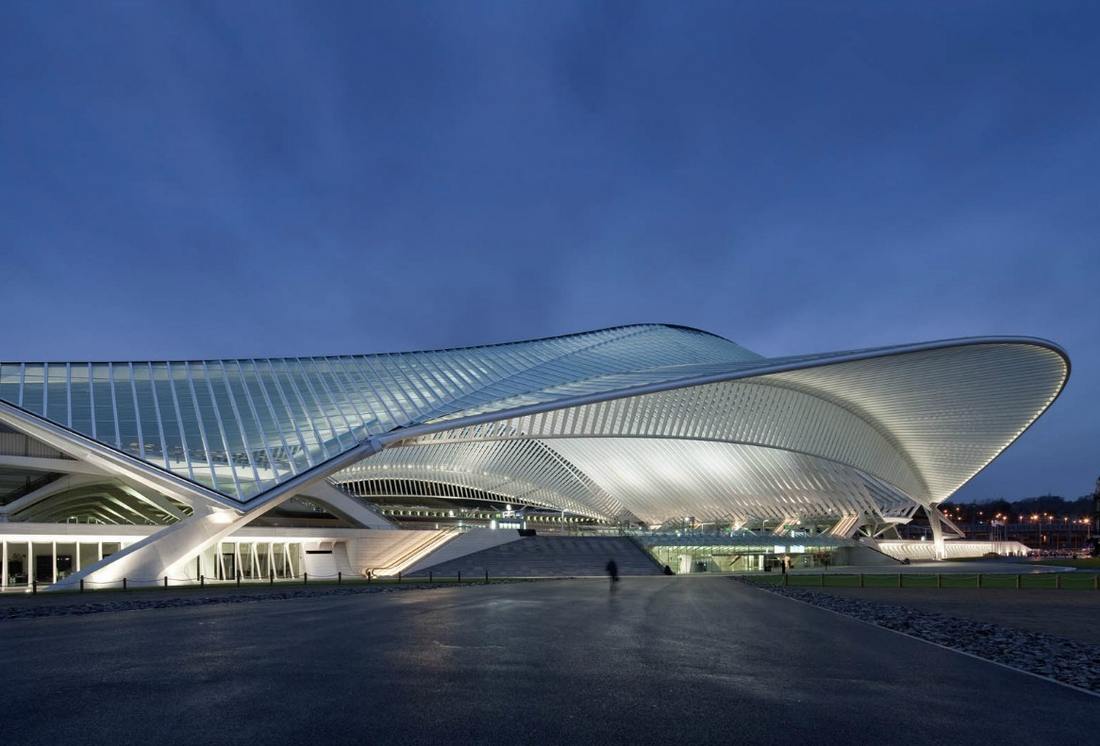
Controversial Calatrava
When watching this year’s edition of the Tour de France one of its arrival places was Liège, the former industrial backbone of Wallonia. Although the city of Liège itself is not a very exciting place, one thing caught my eye: the train station Liège-Guillemins. Two years ago I fortuitously travelled via this station and was completely overwhelmed by the greatness and lightness of this edifice. An entirely unexpected, and somewhat misplaced, structure in the desolated region at the border with Germany. The station is a design by the Spanish architect Santiago Calatrava (b. 1951), one of the major architects of this century. Made of steel, glass and white concrete, the structure includes a monumental arch of 160 metres long and 32 metres high. The roofs of the platforms resemble space ships. Evoking a futuristic vibe, the station is a shiny eye-catcher in this grey area.
Calatrava is known for his often gleaming white, sky-high designs. His style has been described as distinctly neo-Futurist for its innovative use of materials and sleek, forward-thinking aesthetic. His fluid, dreamlike buildings in civic space encompass bridges, train stations, and cultural edifices. His most famous projects include the Milwaukee Art Museum, the Turning Torso tower in Malmö, Sweden, the Margaret Hunt Hill Bridge in Dallas, Texas, and his largest project, the City of Arts and Sciences and Opera House, in Valencia.
However, when talking about Calatrava’s major architectural projects the increasing criticism has to be mentioned as side note. Over the past few years his projects began to draw criticism on the grounds of their cost, delays, and functional problems. Some of the issues have been caused by an excess of innovation and insufficient testing. For example, the glass tiles on the floor of his bridge in Bilbao became slippery in the rain, causing an increased number of accidents and forcing the installation of a black anti-slip carpet on the decking, which blocked the view of the river through the walkway.
Surprisingly enough, with the criticism, lawsuits and ambiguous relationship the architect has with some municipalities, Calatrava continues to realize projects all over the world (Dubai, Huashan, Zurich, or New York). Hopefully with less controversial and problematic outcomes.


